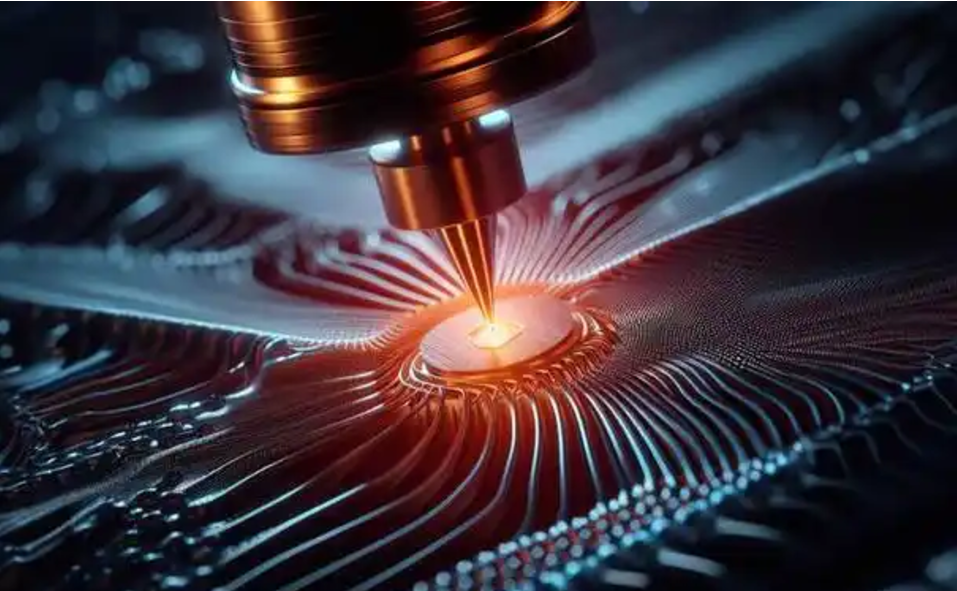The Synergy of Graphene and Nanotechnology
Graphene, with its unparalleled physical, chemical, and electrical properties, has become a cornerstone in the field of nanotechnology. Its ability to integrate with other nanomaterials has led to transformative advancements in multiple industries, from medicine to energy and electronics. This article explores the unique characteristics of graphene, how it combines with various nanomaterials, and its role in driving the development of advanced nanotechnologies.

1. The Unique Characteristics of Graphene in Nanotechnology
Graphene’s success in nanotechnology stems from its exceptional properties, including:
- Atomic Thinness: At just one atom thick, graphene’s two-dimensional structure offers high surface area and adaptability.
- Electrical Conductivity: Its electrons move at near light-speed, making it a near-perfect conductor.
- Mechanical Strength: Graphene is 200 times stronger than steel, yet incredibly lightweight.
- Thermal Conductivity: With thermal conductivity over 5,000 W/m·K, graphene efficiently dissipates heat.
- Chemical Versatility: Functionalization allows graphene to integrate with various nanomaterials.
These properties make graphene an ideal platform for developing hybrid nanostructures and enhancing nanotechnological applications.
2. Combining Graphene with Other Nanomaterials
Graphene’s integration with other nanomaterials creates synergies that amplify their combined properties. Below are some prominent examples:
2.1 Graphene and Carbon Nanotubes (CNTs)
- Integration: Carbon nanotubes, cylindrical molecules of carbon, are often combined with graphene to enhance mechanical and electrical properties.
- Applications:
- Energy Storage: CNT-graphene hybrids are used in high-performance supercapacitors and batteries.
- Composite Materials: Their combination produces lightweight yet strong materials for aerospace and automotive applications.
- Benefits: Enhanced charge storage, improved electrical conductivity, and higher structural integrity.
2.2 Graphene and Nanoparticles
- Integration: Metal nanoparticles (e.g., gold, silver, or platinum) or semiconductor nanoparticles (e.g., quantum dots) can be anchored onto graphene’s surface.
- Applications:
- Catalysis: Graphene-nanoparticle hybrids serve as efficient catalysts in chemical reactions.
- Biosensors: Enhanced sensitivity for detecting biomolecules in medical diagnostics.
- Photovoltaics: Improved light absorption in solar cells.
- Benefits: Increased reactivity, better electron transfer, and heightened optical properties.
2.3 Graphene and Polymer Nanocomposites
- Integration: Graphene is dispersed into polymer matrices to improve their properties.
- Applications:
- Flexible Electronics: Conductive and stretchable films for wearable devices.
- Packaging: Barrier properties for food preservation and anti-corrosion.
- Structural Components: Lightweight and durable materials for infrastructure.
- Benefits: Enhanced mechanical strength, thermal stability, and electrical conductivity.
2.4 Graphene and Nanofibers
- Integration: Nanofibers, such as cellulose or electrospun fibers, are combined with graphene to form advanced composites.
- Applications:
- Water Filtration: Membranes for removing contaminants from water.
- Energy Devices: Electrode materials for batteries and capacitors.
- Benefits: Improved filtration efficiency, higher energy density, and greater flexibility.
3. Advanced Applications of Graphene in Nanotechnology
3.1 Medicine and Biotechnology
The marriage of graphene and nanotechnology has opened new frontiers in medicine:
- Drug Delivery: Graphene oxide nanosheets are functionalized with biocompatible molecules to deliver drugs directly to cancer cells, minimizing side effects.
- Biosensors: Graphene-based nanobiosensors detect diseases with high sensitivity, offering real-time monitoring for diabetes or cardiac issues.
- Tissue Engineering: Graphene’s integration with nanofibers aids in developing scaffolds that support cell growth for organ regeneration.
3.2 Energy Storage and Conversion
Graphene-nanomaterial hybrids are pivotal in addressing global energy challenges:
- Next-Generation Batteries: Graphene-CNT electrodes improve charge/discharge rates and extend battery lifespans.
- Supercapacitors: Hybrids offer unparalleled energy density and quick charging for electric vehicles.
- Hydrogen Production: Graphene-nanoparticle catalysts increase efficiency in splitting water for hydrogen fuel.
3.3 Electronics and Optoelectronics
Graphene’s combination with nanotechnology is shaping the future of electronics:
- Flexible Displays: Graphene-polymer composites enable bendable, transparent screens for next-gen smartphones and wearables.
- High-Frequency Transistors: Graphene-CNT hybrids push the limits of processing speed in microchips.
- Quantum Dot Devices: Integration enhances the performance of LEDs and photodetectors.
3.4 Environmental Sustainability
Graphene’s role in environmental applications is amplified by nanotechnology:
- Water Purification: Graphene-based membranes remove heavy metals and organic pollutants with high efficiency.
- Air Filtration: Hybrid materials capture harmful particulates and gases in industrial emissions.
- Energy Harvesting: Nanogenerators powered by graphene composites harness ambient energy sources like vibrations or sunlight.
3.5 Aerospace and Defense
Graphene-nanomaterial composites are revolutionizing aerospace and defense industries:
- Lightweight Structures: Graphene-CNT materials reduce weight while enhancing strength in aircraft and satellites.
- Thermal Management: Heat dissipation for electronics in harsh environments.
- Protective Coatings: Nanocomposite coatings for corrosion resistance and radiation shielding.
4. Challenges in Combining Graphene and Nanotechnology
Despite its potential, the integration of graphene with nanomaterials faces significant challenges:
- Scalability: Producing graphene and its hybrids in large quantities while maintaining quality.
- Cost: High costs associated with advanced production techniques limit widespread adoption.
- Standardization: Lack of uniform standards for graphene quality and nanomaterial compatibility.
- Stability: Ensuring the stability of hybrids under various environmental conditions.
5. Future Directions and Innovations
5.1 AI-Driven Design
Machine learning models are being used to predict optimal combinations of graphene with other nanomaterials for specific applications.
5.2 Green Manufacturing
Eco-friendly production methods, such as using biomass for graphene synthesis, are gaining traction.
5.3 Multi-Functional Composites
Future research aims to create graphene hybrids that combine multiple functionalities, such as energy storage and structural reinforcement.
5.4 Quantum Applications
Graphene’s potential in quantum computing, when integrated with nanoscale qubits, is a promising avenue for groundbreaking advancements.
Conclusion
The integration of graphene with nanotechnology represents a transformative leap in material science and engineering. By combining graphene’s exceptional properties with the unique capabilities of nanomaterials, industries are poised to address pressing challenges in energy, healthcare, electronics, and sustainability. As research advances and production techniques improve, graphene-based nanotechnology will undoubtedly shape the next wave of innovation, redefining what is possible at the nanoscale.

